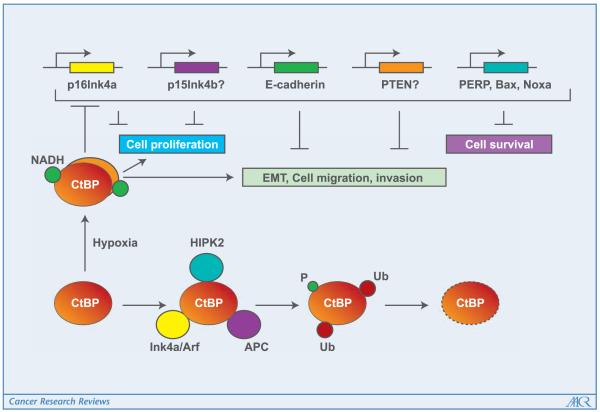Figure 1.
Role of CtBP in tumorigenesis and tumor progression. The transcriptional corepressor activity of CtBP is depicted to be stimulated under hypoxic tumor environment as a result of elevated NADH levels and CtBP dimerization. CtBP is shown to enhance cell proliferation via transcriptional repression of cell cycle inhibitors p16Ink4a and possibly p15Ink4b. The transcriptional repression activity of CtBP is shown to repress E-cadherin and possibly PTEN to promote EMT, tumor cell migration, and invasion. As a result of repression of the proapoptotic genes (PERP, Bax, and Noxa), CtBP is shown to promote cell survival. These activities of CtBP are depicted to be down-regulated by physical association with tumor suppressors HIPK2 or Ink4a/Arf or APC, which promote CtBP degradation as a result of phosphorylation and ubiquitination.

